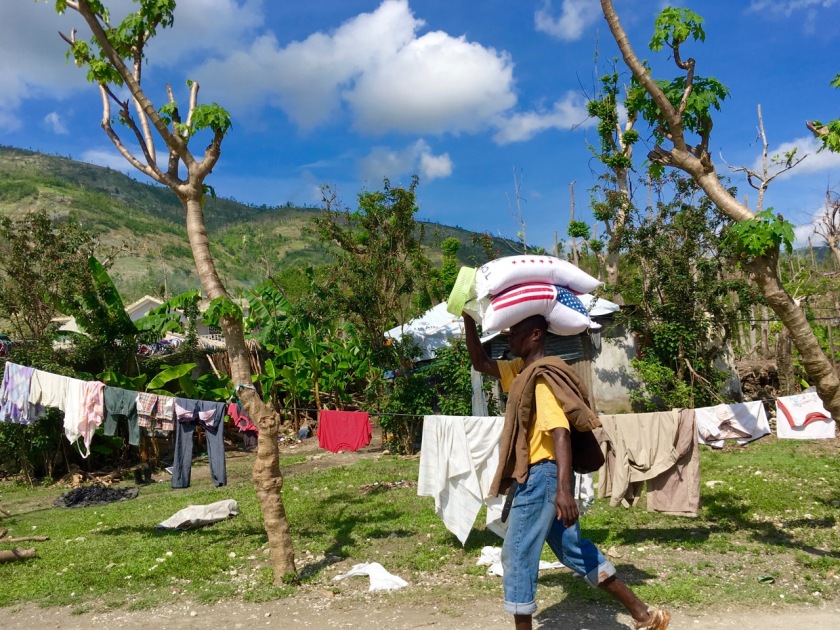
I’ve been back in Haiti less than a month, and already it’s been a whirlwind. With a lot of help from good friends, I moved into a new home, met Almand who is here to serve as “guardian,” someone whose primary job is to keep us safe and whose secondary mission is to become part of our family.
Paul Sinette continues to care for me — she has to be the best cook in Haiti, and she helps me navigate life. Her son Carlens is often here, playing Dominos with Almand.
They all teach me Creole, learn English from me and we take turns saying Grace.
It’s a good deal.
We welcomed a kitten to the house about a week ago. Kimberly, named by Paul Sinette, pretty much runs the place and brings much entertainment.
As you know, Hurricane Matthew did a number on several parts of Haiti, especially to the southern peninsula. The storm hit Oct. 4 and 5. The second weekend of November I was able to visit the South and Grand Anse departments that suffered catastrophic damage.
Fabienne Jean, coordinator of our network FONDAMA, and I traveled to Les Cayes and then onto Grand Anse to visit with partner organizations and also Luke Osikoye, international associate with Presbyterian Disaster Assistance.
Passing Grand Goave on National Route 2, we began to see the damage Matthew left behind. The bridge at Petit Goave was washed out, and a detour was in place while workers replaced it.
Torrential rains have continued in the region, so beyond the obvious hurricane damage — destroyed houses, roofless homes and trees devoid of leaves and branches — we passed flooded roadsides, yards and fields.
Farmers who had access to oxen used them to plow fields. People of all ages walked the roadways carrying water, food and construction materials.
We passed a number of funerals — people wearing black and white, walking slowing in small groups. On the national highway outside of Les Cayes a beat up pickup carried a casket and followed a five-person brass band while friends and family of the deceased followed on foot.
In Moron and Marfranc, World Food Programme and USAID were handing out bags of rice and tarps. In both villages, people lined up in the hot sun to wait. We saw dozens of people carrying their aid home — many of them waste-deep through overflowing rivers.
The further we went, though, and the closer we got to the village of Chambellan located near the southern peninsula’s tip, I saw the bits of hope.
Clothes and sheets and underwear, washed in whatever water was available and simply hanging in the breeze.
Red blouses, green slacks, blue jeans, multi-colored sheets — waving as if a grand sign that in spite of it all, life goes on.
In clean clothes.
I will have more to tell you soon, including ways you can help. FONDAMA is working on a proposal through PDA to help people in these communities with recovery.
Please know that you are appreciated — for caring, for reading and for continuing to pray for all the people of Haiti and those around the world.
God bless.
